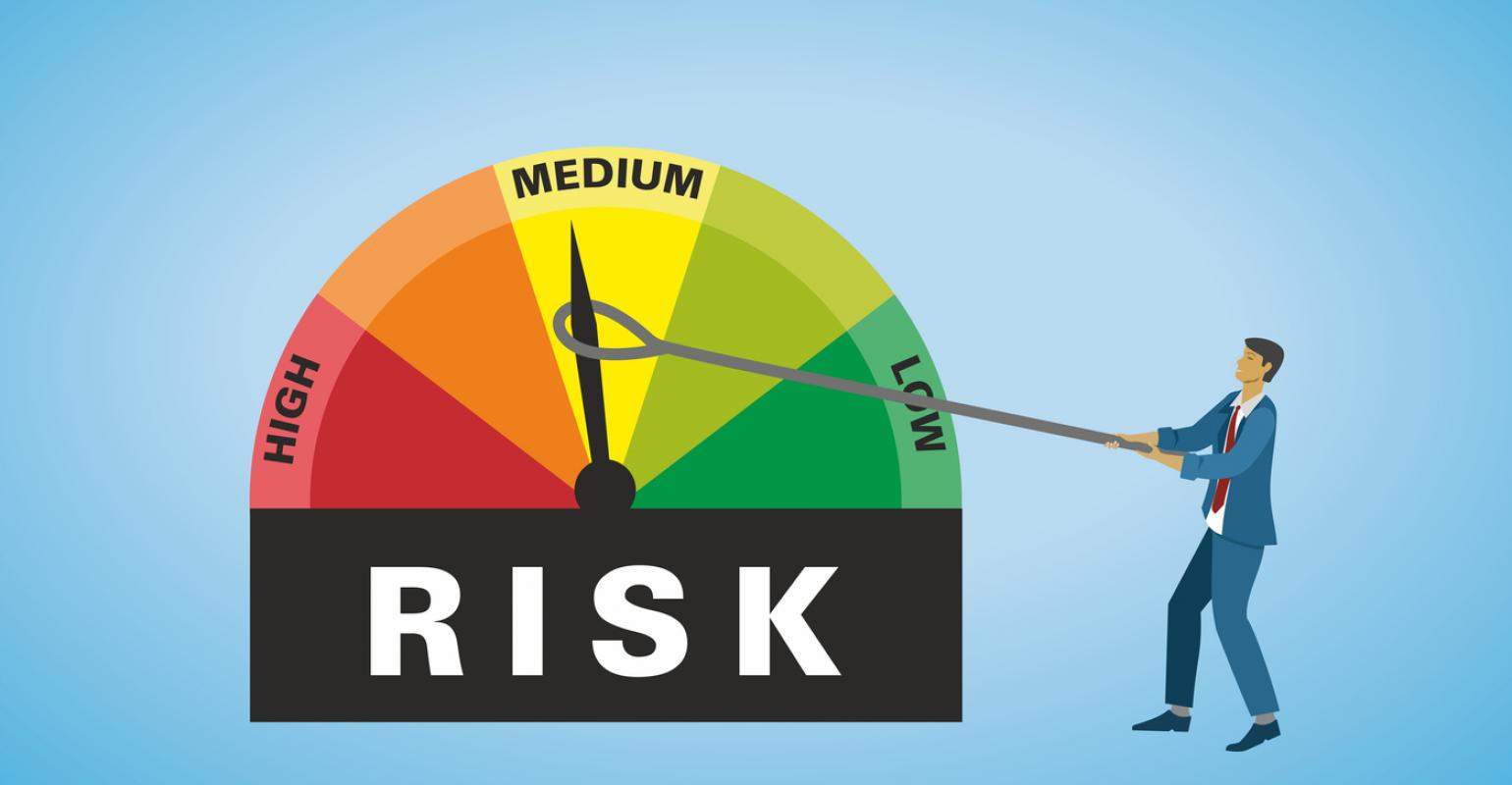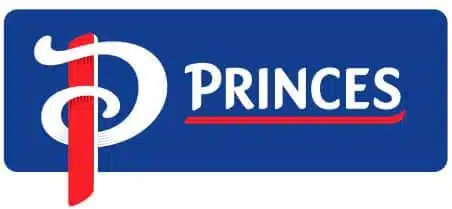Why Now Is the Time to Revamp Your Procure-to-Pay with...
Read MorePurchase To Pay Solution That Increases Efficiency & Productivity
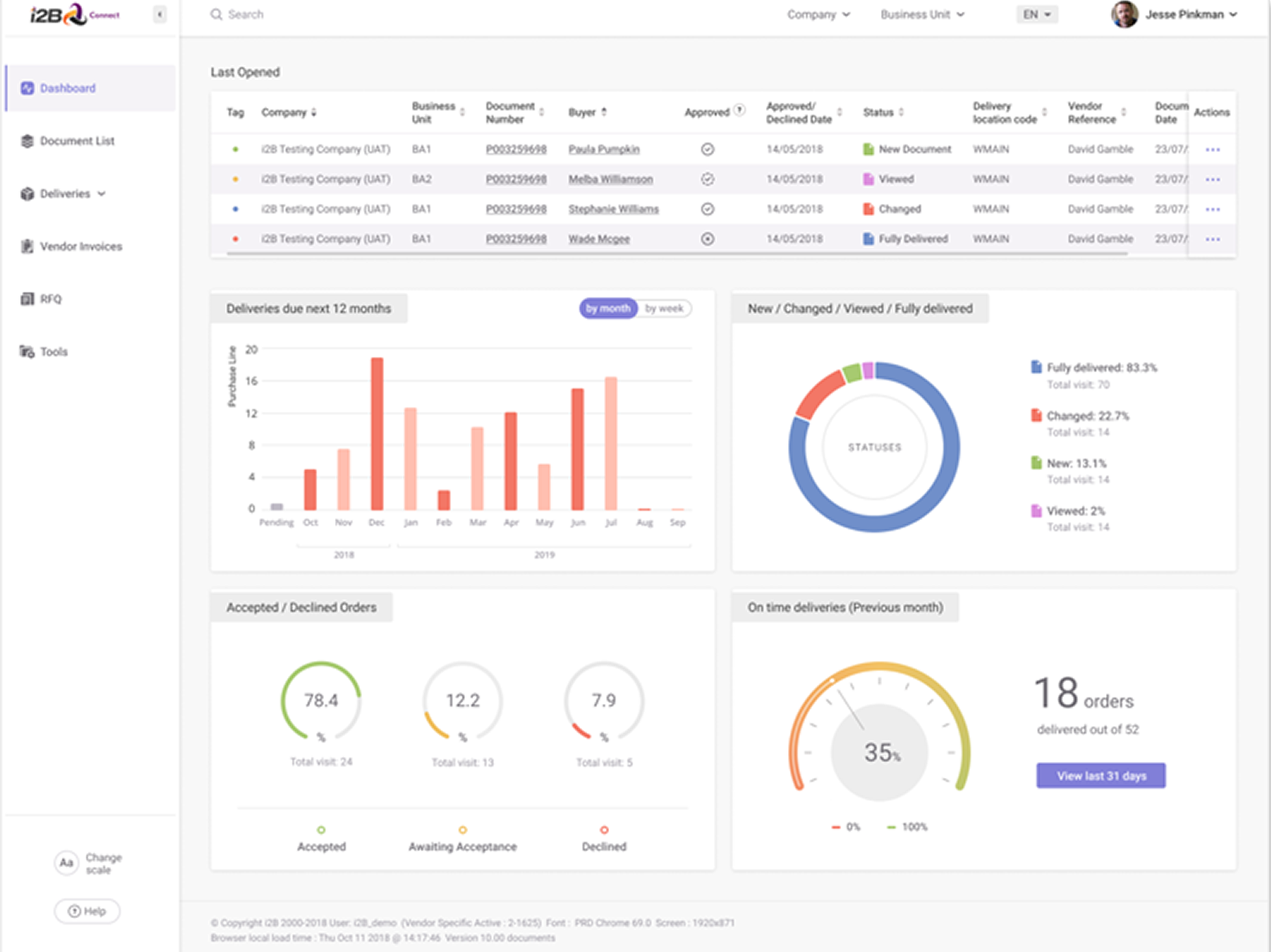
Purchase To Pay Is Plagued With Inefficiencies, Errors & Risks
With so many steps and moving parts that need to synchronise, in order for each procedure to be executed as efficiently as possible, it comes as no surprise to know, that the complexity and coordination required leaves room for many issues to surface.
From maverick spending to incorrect purchase order fulfillment, the door is wide open for any number of issues to come through, and they regularly do. Having worked with many companies, over the past 20 years, we know many of the pain points that our clients face and with i2B-connect we aim to address these
i2B Addresses Pain Points In The Purchase To Pay Cycle
Requisition
A person in a department will request to procure goods or services by raising a requisition request. This will then generate a requisition which will need to be approved by their line manager or multiple managers. Severe delays are caused by working out the approval process, chasing a response from the approver or approvers, and manually approving the requisition to a purchase order or RFQ within an ERP system.
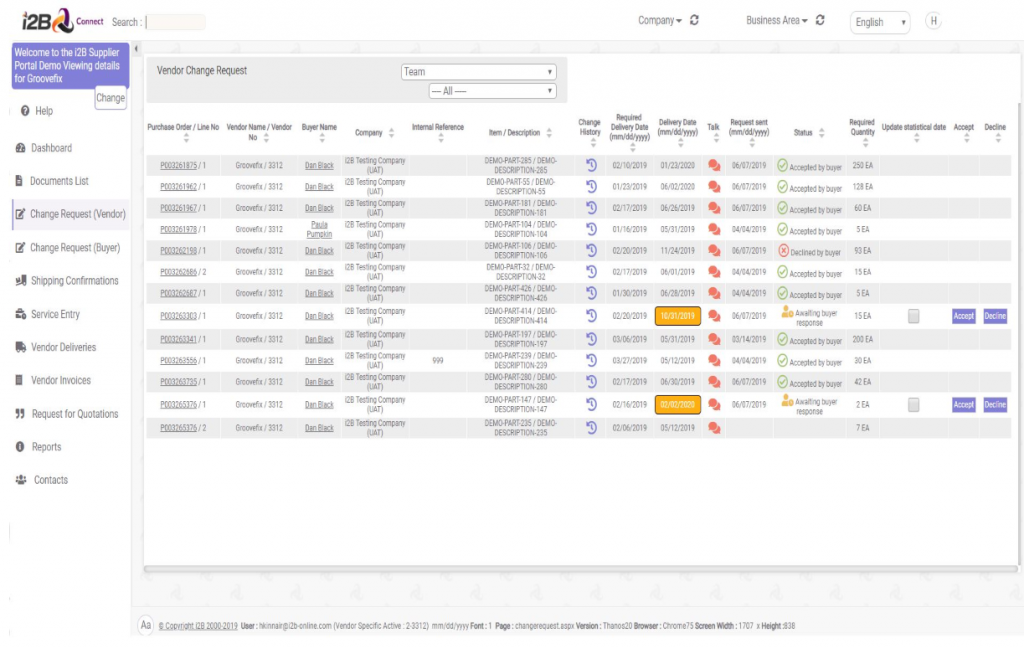
Requisition Module Benefits
-
Approval matrix within i2B automatically works out who should approve each requisition
- Automated emails sent to approver(s) requesting either an approve or decline of the requisition. Just a click on the email to action
- Automatic creation of an RFQ or Purchase order into your ERP system without any manual entry once the requisition is fully approved
RFQ
A requirement to source a product or service may require an RFQ (request for quotation). The Procurement department will initiate an RFQ which can be for a specific vendor or a multitude, who will respond with their quote, pricing, lead times, terms and associated details.
RFQ Module Benefits
- Complex part number searches, vendor catalogue integration and upload tools make the RFQ creation / vendor selection process all within i2B
- Automated emails sent to vendors can be generated requesting responses to deadlines
- i2B can automatically create a Purchase order in your ERP system from an approved RFQ without any manual entry

Purchase Order
A purchase order will be issued by the procurement department to the selected vendor for fulfillment. You’ll be in the dark as to if the vendor has actually perused the PO. Any changes made at either end also cause delays as the waiting time to acknowledge, approve or decline drags on.
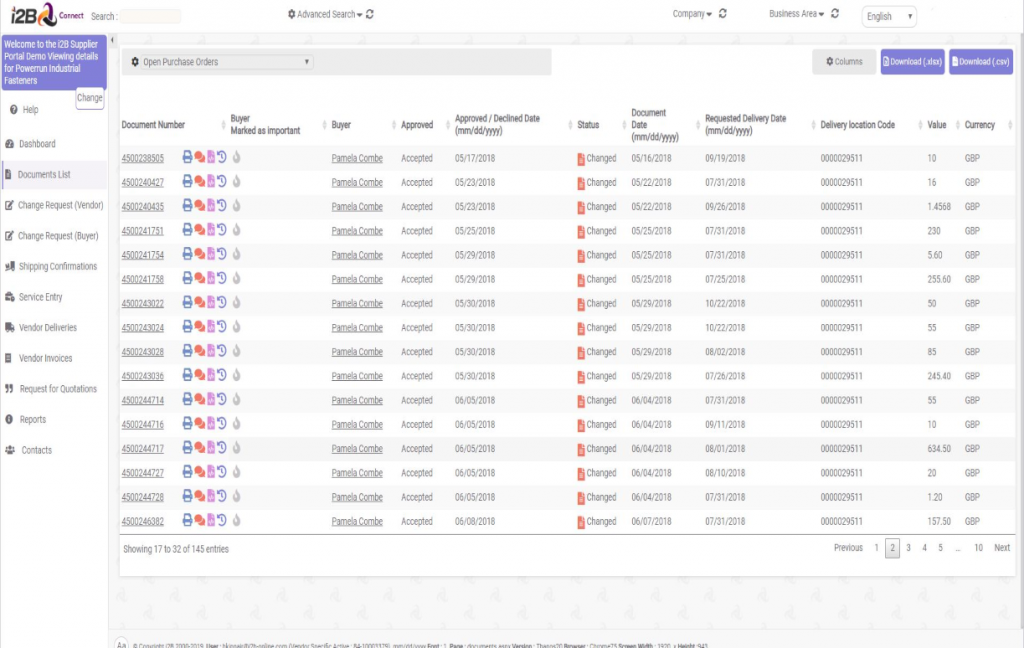
Purchase Order Module Benefits
- Confirmation that a PO has been received by the vendor and automatic prompts to remind them to acknowledge / accept or decline it
- Communicating changes instantly with full change history of the PO, as well as requesting changes to delivery dates / pricing / order quantities
- Supply the vendor with open order information, forecasts, and on-time delivery statistics to maintain or improve standards
Goods Received
The vendor will send the requested goods and issue an advanced shipping note. Well at least they are supposed to, but you will often receive goods with no identification as well as missing documents like quality assurance certificates. If goods haven’t arrived then trying to track where it is causes unnecessary stress and confusion.
Automatic Shipping Notification Module Benefits
- i2B can generate bar-coded delivery notes for vendors to attach to shipments. This will identify the Purchase Order number, line number, part number and quantity being shipped
- Vendors can create delivery notes within i2B and attach all relevant documentation for the shipment, including quality certificates
- Stay up-to-date in real-time with notifications as to the actions implemented by the vendor
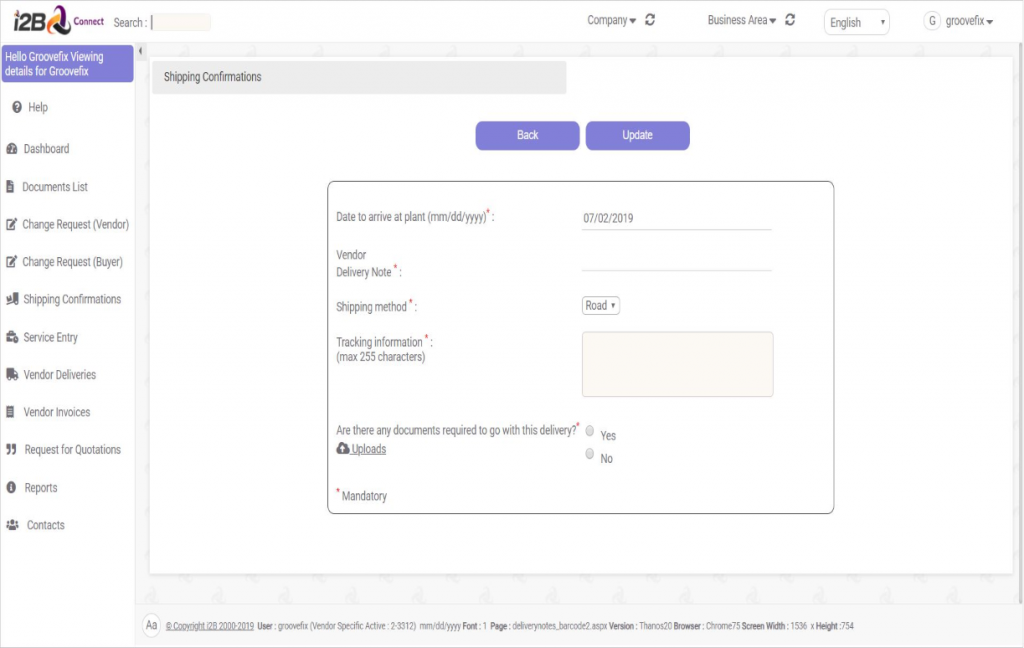
Invoice Management
The finance department verifies the invoice alongside the purchase order and receiving document, before processing the invoice and releasing payment. Unfortunately discrepancies often show up when comparing the invoice, the purchase order and the delivered goods. Invoices also create issues on their own, when they are sent ahead of the goods being received, or when they fail to reference the original purchase order.
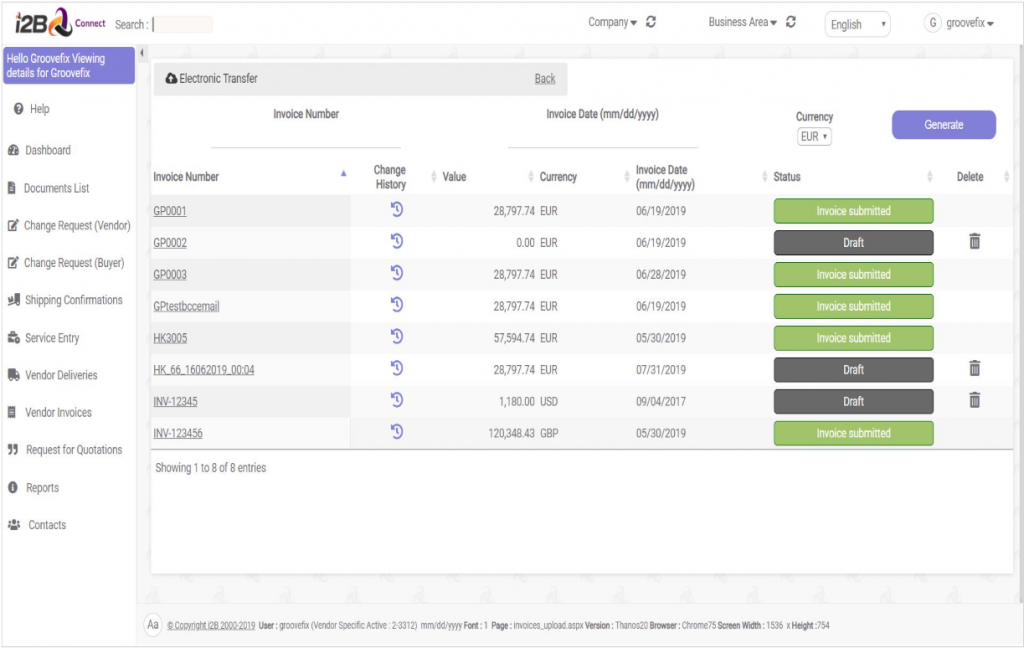
Invoice Management Module Benefits
- i2B performs 2-way or 3-way matching, ensuring vendors can only invoice against ordered and delivered quantities
- i2B can ensure that goods are receipted before an invoice can be raised
- The original purchase order number, line no and part number are all referenced on the vendors invoice as part of the validation performed enhancing quicker processing of invoices
Total Supply Chain Management
Beyond Handshakes: Why Supplier Audits and Onboarding SaaS are Non-Negotiable in 2025’s Business Landscape
In today's fast-paced business environment, efficiency and accuracy are paramount....
Read MoreStrengthening a Recipe for Success: Princes Group Upgrades to i2B’s Latest Procure to Pay Software
In today's fast-paced business environment, efficiency and accuracy are paramount....
Read MoreNavigating the Storm: How Trade Tariffs Impact Global Commerce and the Role of SaaS Supplier Portals
In today's fast-paced business environment, efficiency and accuracy are paramount....
Read More

